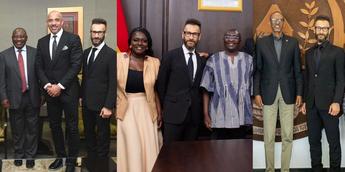Consumers have been focusing on self-care products, stocking up on large-sized shampoo bottles, skincare and at-home hair colouring products, she said.
Total beauty sales in the United States declined 58 percent in the week ending March 28 versus the prior year, according to data from market research firm NPD Group. Courting homebound customers has been vital to protecting beauty industry bottom lines as other retail sectors collapse.
Global e-commerce sales at L’Oréal surged by more than 50 percent in the first quarter which helped partially offset a steep decline in retail sales at airports and department stores, the company reported on Thursday. Beauty sales have also started bouncing back in China, where the coronavirus outbreak began, and demand for skin and hair products are expected to rise.
Fuss-Free Looks at Home
Make-up marketing has focused on simple looks. L’Oréal’s Lancôme Paris brand on Friday hosted a live-streamed tutorial with celebrity makeup artist Lisa Eldridge.
The session concentrated on skin products like under-eye concealer and lip balm, versus pre-pandemic times when consumers might have been more focused on lipstick, Saegh-Fleming said. “People are taking an easier and fuss-free approach for their looks at home.”
For cosmetic brands, lip colour will likely be less important as more people wear masks, said Agathe Guerrier, co-chief strategy officer for creative advertising agency TBWA, which counts Estée Lauder Companies Inc as a client in Spain.
“One interesting thing will be how to make the best of your look and face while you’re wearing a mask. This is something Asian countries have been used to for a while, and that’s coming to the West,” she said.
Self-care is at the forefront of beauty marketing during the pandemic, said Eitan Reshef, president of digital marketing firm Blue Wheel Media, which works with skin care brands like Peter Thomas Roth and Caudalie. That includes anything “rejuvenating, attacking fine lines,” adding that colour cosmetics like eyeshadow, while still selling, are “playing second fiddle.”
“You still have this culture where you’re in front of the camera,” Reshef said. “There’s been a proliferation of face-to-face contact, and people still care how they look.”
By Sheila Dang; editors: Kenneth Li, Vanessa O’Connell and Cynthia Osterman.































